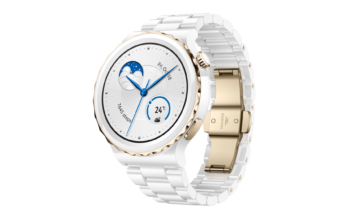It also uses information, such as your location, to make sure the things you buy actually get delivered to you. “We process your personal information to operate, provide, and improve the Amazon Services that we offer our customers,” the company’s privacy notice says. It also broadly sets out the legal arguments for all the data it collects.
Let’s look at the information you give to Amazon. You should assume that everything you do on Amazon’s website, apps, or any of its products is saved in some way. Every order you place on Amazon, every show you watch on Prime, every song you listen to on Amazon Music, and every request you make of Alexa is tracked and stored.
Amazon’s privacy policy says that, depending on your settings, you might give it your name, address, phone number, age, location, bank details, credit history information, playlists, watch lists, wish lists, voice recordings, Wi-Fi credentials, and any photographs you’ve uploaded to your profile, as well as the names, emails, and addresses of people in your contacts. And if you sell items on Amazon, it can get your VAT and other business information.
The automatic information Amazon collects is where things get a bit more creepy. This is all data about how and when you use Amazon products. Freelance journalist Riccardo Coluccini was sent a table with 12,048 rows detailing all the clicks he made on Amazon’s website. “The values concern the day and time when a specific page is visited, the IP address and the device used, the geolocation—if possible—based on the IP address, and the name of the telecommunication company that offers the internet service,” he wrote in 2018. Similarly, other data requests to Amazon show how Kindle logs the date, time spent reading, and how often you copy or highlight parts of books. Likewise, Ring doorbells log every record of motion they detect and each tap made within the Ring app.
Amazon’s privacy notice details that it may automatically collect your IP address, login details, the location of computer, errors your device logs when using its services, your app preferences, cookie details, identifiers linked to your phone or computer, and all the URLs that you click, including page interaction information “such as scrolling, clicks, and mouse-overs.” It’s not uncommon for companies to collect and record all of your interactions with their products—they can be used to improve the products and identify bugs—but this information quickly adds up. Amazon says the data it collects can be used to improve its services as well as complying with legal obligations and other purposes. “We are not in the business of selling our customers’ personal information to others,” its privacy notice says.
The final type of information Amazon collects about you is that from third parties. This can include updated delivery addresses if a delivery company finds there’s a problem with the one you provided; account and purchase information from “merchants with which we operate co-branded businesses”; information about “interactions” with Amazon’s subsidiaries (there’s a lot of them and they have their own privacy policies); information about devices you’ve linked with Alexa; and credit history it gets as part of its efforts to detect fraud.
How to Stop the Tracking
It’s impossible to stop Amazon tracking you completely—if you’re going to shop with Amazon, then Amazon will collect your data—but there are a few steps you can take to limit the information that it can gather and use. Some of these are provided by Amazon itself, while others involve tweaking your browser settings and using other tools.
First, if you’re interested in the data Amazon has stored about you, you can use its download tools to access some of it. This will only provide you with a subset of what Amazon has, and you’ll have to make a subject access request to get everything.




Well I sincerely liked reading it. This information provided by you is very constructive for correct planning.